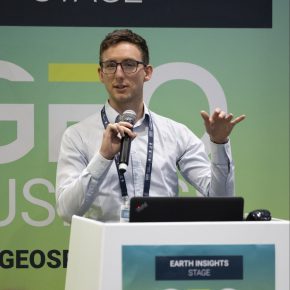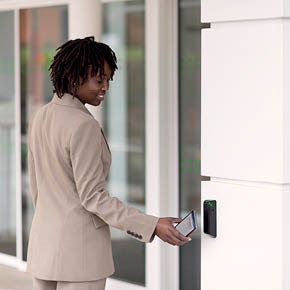
GUEST ARTICLE: Now is the time for water neutrality
 With World Water Day fast approaching, now is the time for water neutrality, says Rickesh Miyangar, Director at Ramboll…
With World Water Day fast approaching, now is the time for water neutrality, says Rickesh Miyangar, Director at Ramboll…
“World Water Day, 22nd March, is only weeks away. This year, given reports that the past February was England’s driest since 1993, the theme of ‘accelerating change’ should be hard to ignore – especially given warnings from the National Drought Group earlier the same month that the UK was only one dry spell away from severe drought. It seems that after half of England suffered under drought conditions in 2022, drought will return in force this summer.
This dry weather has resulted in the Environment Agency designating an increasing number of areas in serious water stress and, as the pressure of water scarcity grows, the need for the built environment industry to focus on achieving water neutrality will only grow with it.
Water neutrality – the principle that water usage in the area of a new development should be equal to or less than the previous total water usage – should be at the forefront of considerations for all property professionals working on a new development. But achieving water neutrality will require both improved sector-wide understanding of the issue and increased government support.
Are current water regulations strict enough?
Part G of the UK Building Regulations currently sets a mandatory daily consumption of no more than 125 litres per capita for new builds. But whilst any target is welcome, this regulation is best viewed as a minimum-acceptable baseline rather than the route to sustainable water usage. This has been recognised at a local level: for example in the Sussex North Water Zone, where water scarcity poses a significant threat to biodiversity, new developments are required to ‘demonstrate and robustly evidence water neutrality’.
Action at a national level has so far been largely absent. It may not be possible to achieve water neutrality by introducing just one new regulation, but mandating the use of easily accessible technologies such as smart meters, flow restrictors and low-flush toilets would make an immediate difference to current water abstraction rates.
More significant progress still could be achieved through wider use of reclaimed water technologies, such as using rainwater for flushing toilets and irrigation or reclaiming grey water for wash basins, showers and baths before filtering it into clear water storage tanks.
Reducing existing demand by retrofitting existing properties in this way is a realistic aim that could make a substantial difference to an area’s rate of water abstraction.
Should water neutrality be treated as seriously as net-zero?
Net-zero has provided a useful target for gaining momentum in engagement with decarbonisation, however we should not be looking to provide water neutrality with its own
‘net-zero moment’. Decarbonisation and water neutrality are not identical and shouldn’t be treated as such. But understanding both initiatives as equally important would be a useful step towards recognizing the significance of sustainable water usage, provided it is allied with practical steps in the industry such as predicting how much water new developments will use and using that to establish targets for how much existing water demand in a region should be reduced by.
Water neutrality needs to be widely understood as a key goal for a sustainable society, one that is as important as existing commitments to sustainability such as net-zero.
Our industry should work to foster a better understanding of water-saving techniques, as well as encouraging investment in new technology. Without this, the issue of water scarcity will only grow more serious, making here-and-now the point action on water neutrality must be accelerated.”
Latest news

8th April 2025
First look at industry speakers for GEO Business 2025
GEO Business, the UK’s premier geospatial event, is set to return to ExCeL London on 4 – 5 June 2025, bringing together the brightest minds in the industry.
Posted in Articles, Building Industry Events, Building Industry News, Building Products & Structures, Building Services, Exhibitions and Conferences, Information Technology, Innovations & New Products, Restoration & Refurbishment, Retrofit & Renovation, Seminars
8th April 2025
Digital Construction Week 2025 announces first wave of industry-leading speakers
Digital Construction Week (DCW), the UK’s premier event for digital innovation in the built environment, is set to return to ExCeL London on 4 – 5 June 2025.
Posted in Articles, BIM, Infrastructure & CAD Software, Building Industry Events, Building Industry News, Building Products & Structures, Building Services, Building Systems, Civil Engineering, Exhibitions and Conferences, Hard Landscaping & Walkways, Health & Safety, Information Technology, Innovations & New Products, Landscaping, Retrofit & Renovation, Seminars
7th April 2025
Abloy UK provides bespoke access control solution for CPA Group’s Lanarkshire HQ
Abloy UK has supplied CPA Group with its PROTEC2 CLIQ solution to streamline access control and protect assets at its headquarters in Shotts, Lanarkshire.
Posted in Access Control & Door Entry Systems, Architectural Ironmongery, Articles, Building Industry News, Building Products & Structures, Building Services, Case Studies, Doors, Facility Management & Building Services, Health & Safety, Restoration & Refurbishment, Retrofit & Renovation, Security and Fire Protection
7th April 2025
ASSA ABLOY EMEIA: A new generation of reader is added to the Aperio digital access family
There is now a way to control access digitally, effectively and wire-free, thanks to ASSA ABLOY EMEIA…
Posted in Access Control & Door Entry Systems, Architectural Ironmongery, Articles, Building Industry News, Building Products & Structures, Building Services, Doors, Facility Management & Building Services, Health & Safety, Information Technology, Innovations & New Products, Posts, Retrofit & Renovation, Security and Fire Protection
 Sign up:
Sign up: